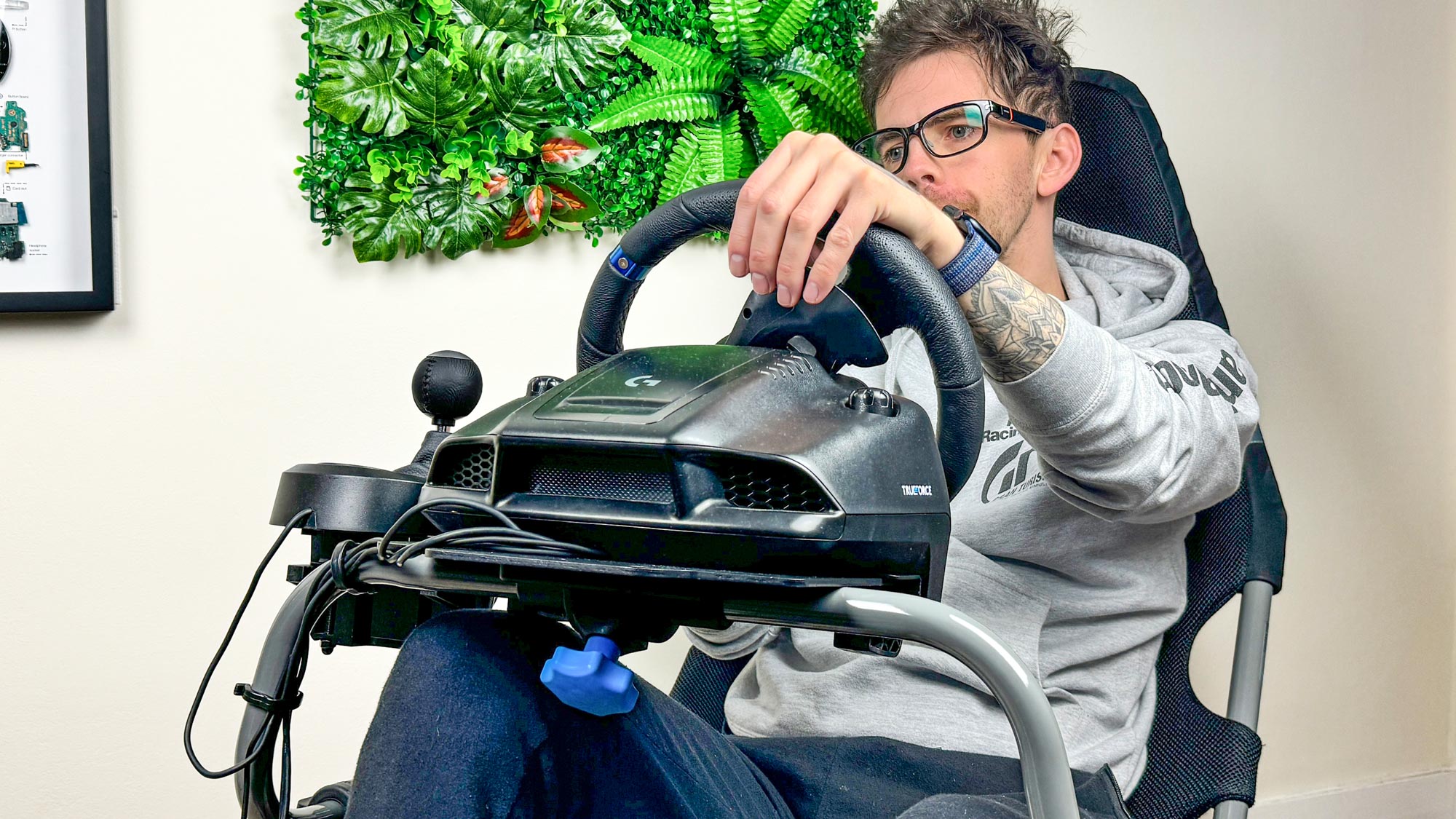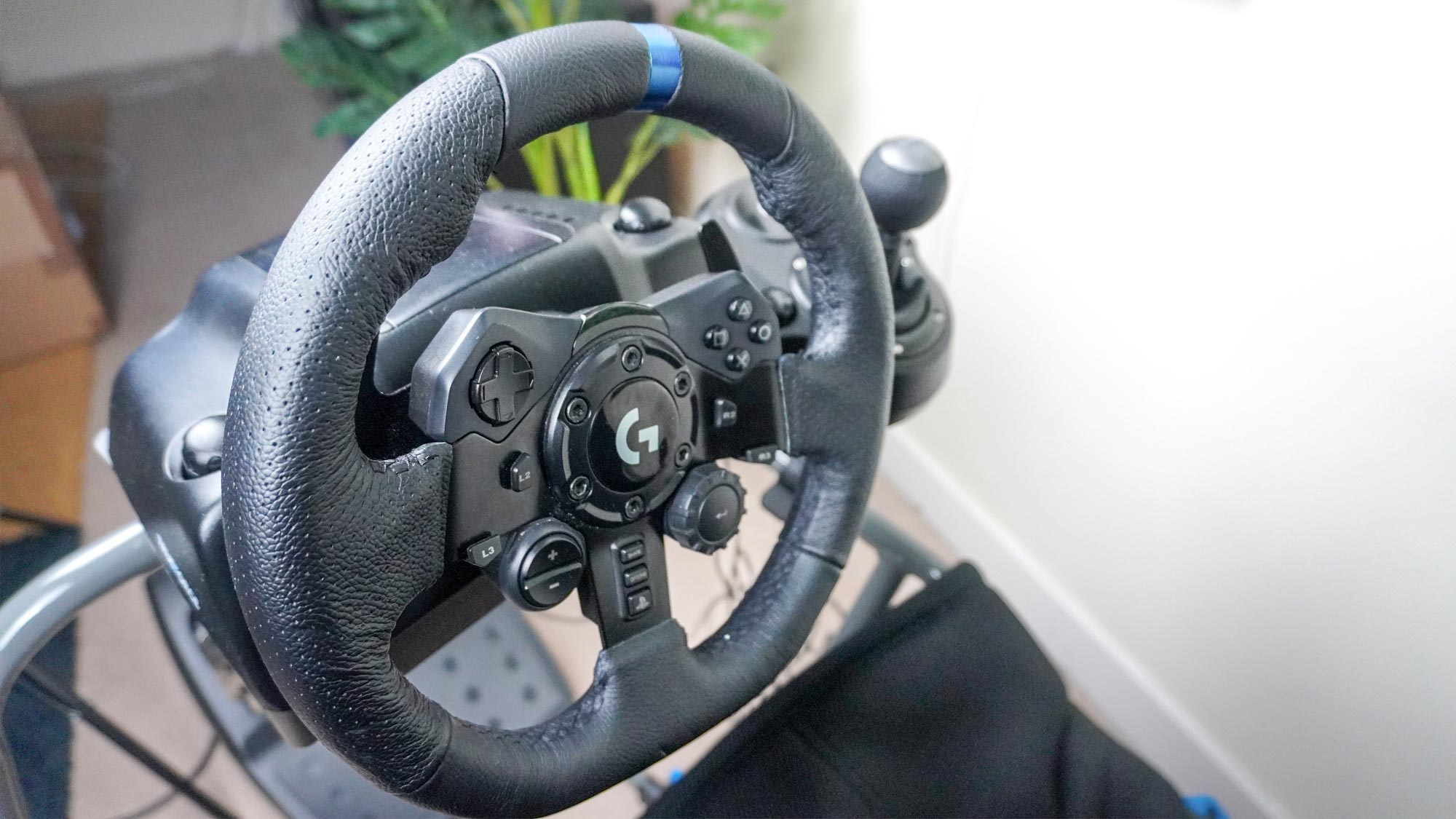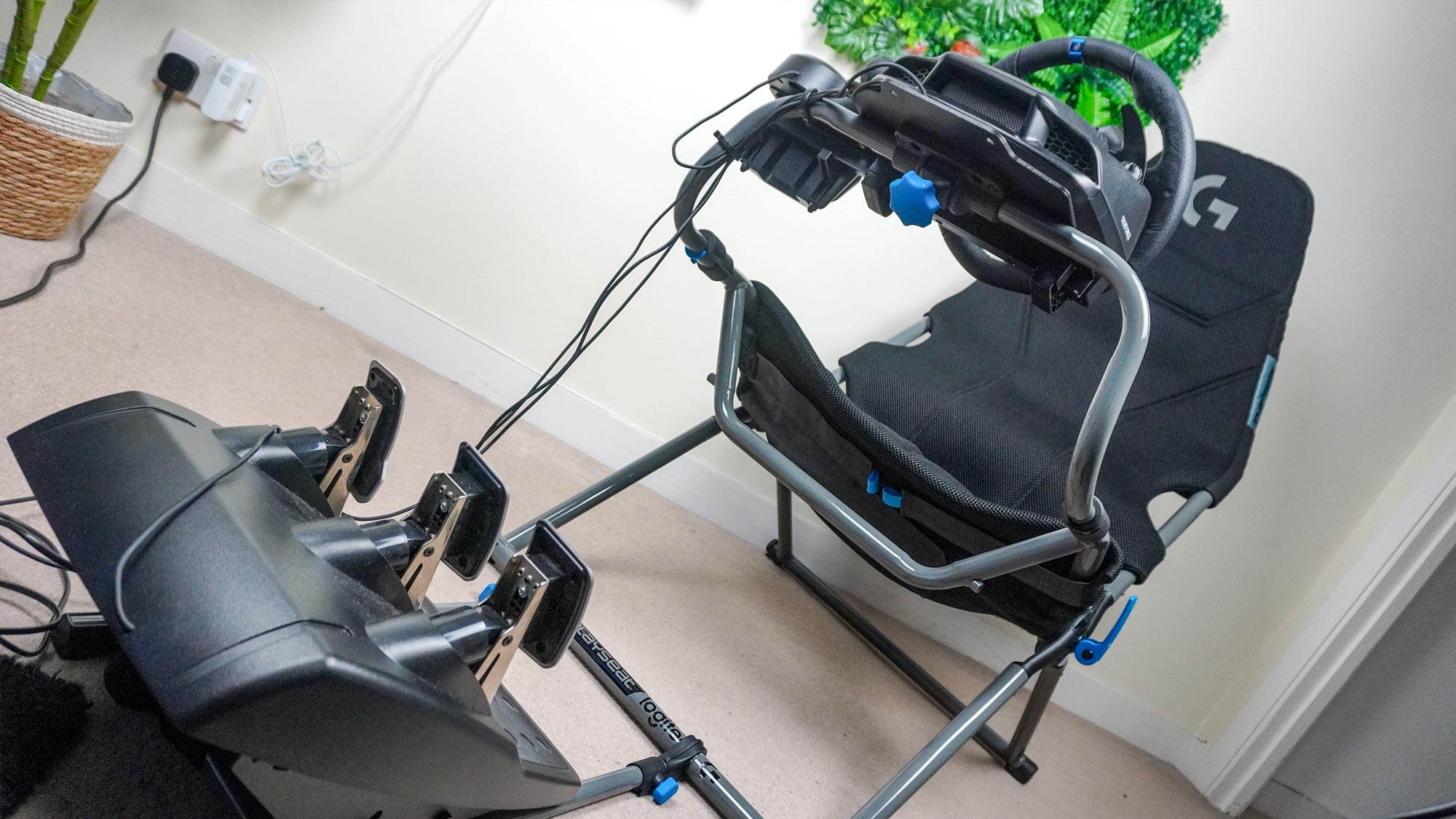
I’ve loved racing games since my Dad bought me Gran Turismo on PS1 for my 8th birthday. Fast forward to now and after three years of competitive sim racing, me and my bank account have learnt one thing — this hobby can be expensive.
I sit here and look at my pride and joy and recoil in horror at the price tag. The PlaySeat Instinct F1 Edition sets you back $600, and while the Logitech G Pro is the wheel of my dreams, the $1,000 cost certainly isn’t!
And when you try to get into sim racing on a budget, the compromises you make can lead to a shoddy experience — from desk clamping your wheel that doesn’t feel remotely immersive to weak force feedback that doesn’t give you the required haptics to understand what the car is doing.
So since I’m a habitual penny pincher, I thought I’d set myself the challenge of making the best sim rig I possibly could for around $500. Turns out that you can get something rather impressive for your money that will stand the test of time as you start to get into the world of serious motorsport gaming.
The wheel

To start with, we’ve got to get a decent wheel and pedals. While Direct Drive wheels are indeed getting progressively cheaper over time, for the bargains, it’s usually best to go with one of two options:
- A belt-driven wheel: provides force feedback through the tensioning of a belt around the steering column of the wheel.
- A gear-driven wheel: alters the strength of an understeer/oversteer biting by toughening up the rotation of gears around the steering column.
Personally, while belt driven wheels are certainly a lot quieter in use, I always prefer the bite of gear-driven, which is why I’ve opted for the Logitech G923. Yes, you could save more money and opt for the G29. The identical strength of force feedback is clear here, but you’re missing out on two key things here that I feel make this more worth it.
First, the brake pedal on the G923’s pedals has a nice gradual curve of firm strength the more you push it down — doing a better job of mimicking what a real car does. That certainly helped with my ability to trail brake and extract more performance out of the car in complex chicanes.
And second, Trueforce is mightily impressive at this price. It’s a force feedback model that connects directly with the game’s physics to provide more detailed haptics. The additional detail gives you far more knowledge of tyre grip, surface texture and the smaller sensations needed to identify moments of oversteer or understeer to control.
The chair

Yes, the wheel is the most important element to go racing, but for the real deal, a sim seat is also crucial. The desk clamp of the G923 is good to get started at your table when it comes to taking to the track for the first time, but the racing posture is a big deal for immersion and screwing the wheel directly into a chair eliminates any risk of that clamp slipping around.
And this is where I turn my attention to something I’ve already written about. The Playseat Challenge is an impressively versatile cockpit with a comfortable cushioning and an adjustable posture from higher up GT-racing seating to the lower F1 throne.
Even better? It can be folded and stowed away really easily — perfect for small home dwellers who need to reclaim their living room space after an evening of driving.
The immersion
Finally, with the ever-increasing levels of visual fidelity in the likes of the drop dead gorgeous Gran Turismo 7, it’s easy to forget how important sound design is — especially in sim racing games.
Improvements in surround sound mean that the audio production can give you some crucial details such as positioning of competing cars around you and even some sound cues of whether you’re overworking your tyres. Then there’s the whole thing of team comms if you’re in an endurance race requiring talking to spotters. That’s where the Logitech G733 comes in.
Outlook

So at the end, the total cost came up to $587. That’s a little bit over-budget, but to get as immersive an experience, while also allowing for crystal clear team comms when you’re in the heat of an endurance competition on iRacing, every one of these elements is critical.
Of course, you can go under that $500 mark if you don’t get the headset, but in my own testing, trust me when I say a pair of cans like this is not just needed for immersion, but can also give you a competitive advantage too.







